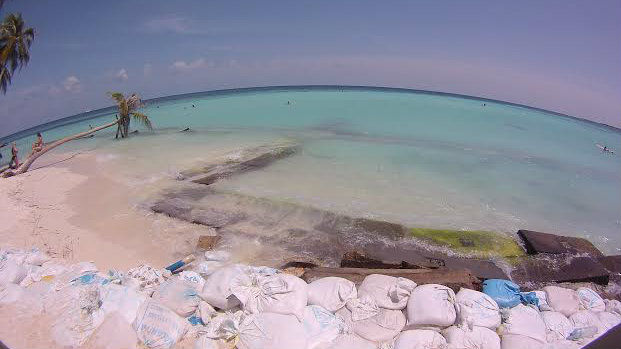In Maafushi, guesthouses worry erosion may drive tourists away
On Maafushi, the island that pioneered guesthouse tourism, business is booming. But today, guesthouse owners worry severe beach erosion may drive tourists away.

30 Jul 2015, 9:00 AM
Lounging on a beach chair on Maafushi Island, Carl Stott, a tourist from the UK, said: “I have travelled all over the world. I can tell you the best thing Maldives has to offer is the beaches and the sea.”
Stott is one of the dozens of tourists in Maafushi for Maldives on a budget.
The island, just three hours from capital Malé, pioneered guesthouse tourism in the Maldives. Since the first guesthouse opened in 2009, some 36 guesthouses with a total of 593 beds have cropped up. Business is booming, but today guesthouse owners worry severe beach erosion may drive tourists away.
Elders in Maafushi told me some 600 feet of beach have washed away in the past 15 years. Pointing to the “bikini beach” where tourists while their days away, 75-year-old Mohamed Ali said: “In my childhood, this area was full of trees and we had an enormous beach.”
Become a member
Get full access to our archive and personalise your experience.
Already a member?
Discussion
No comments yet. Be the first to share your thoughts!
No comments yet. Be the first to join the conversation!
Join the Conversation
Sign in to share your thoughts under an alias and take part in the discussion. Independent journalism thrives on open, respectful debate — your voice matters.




